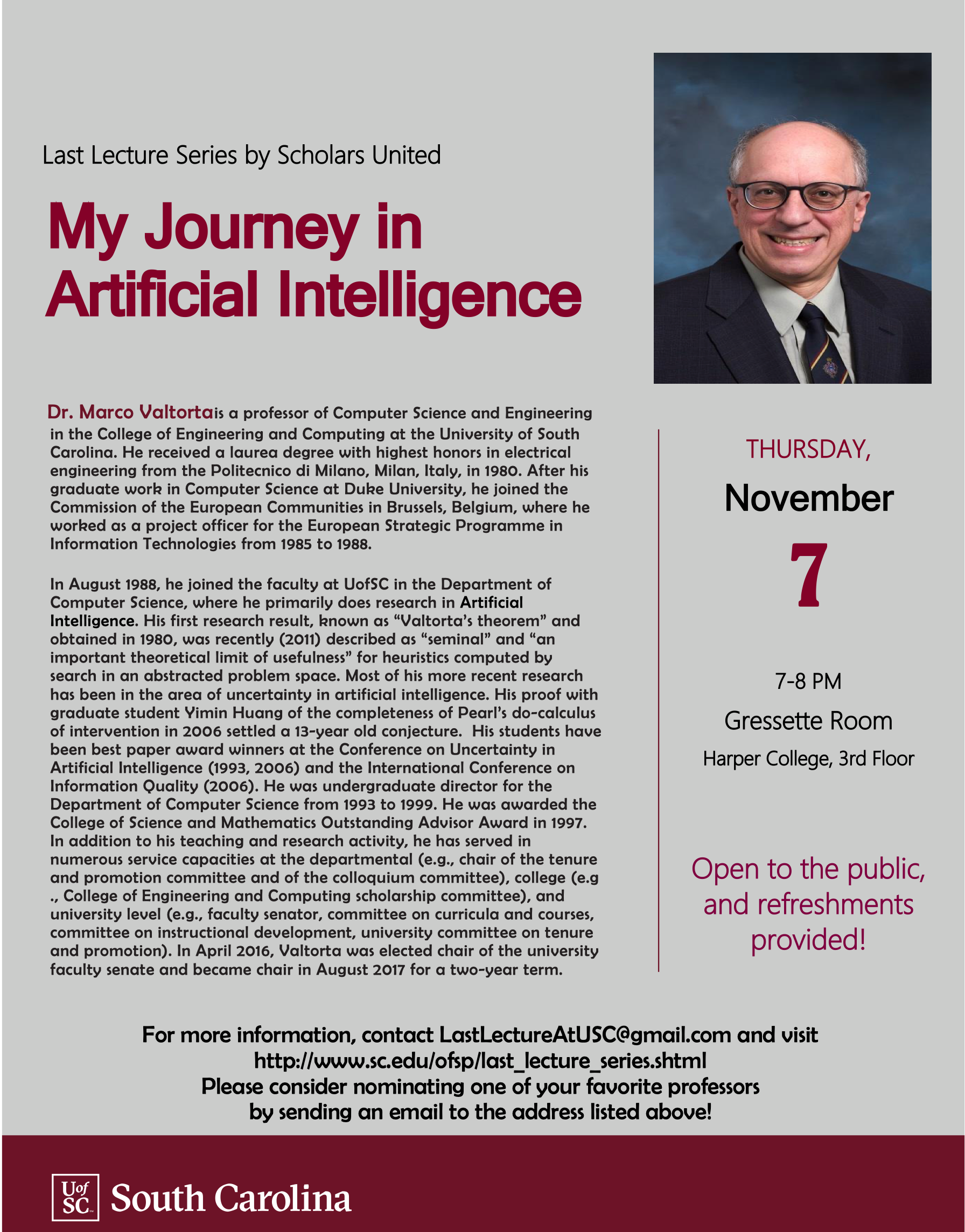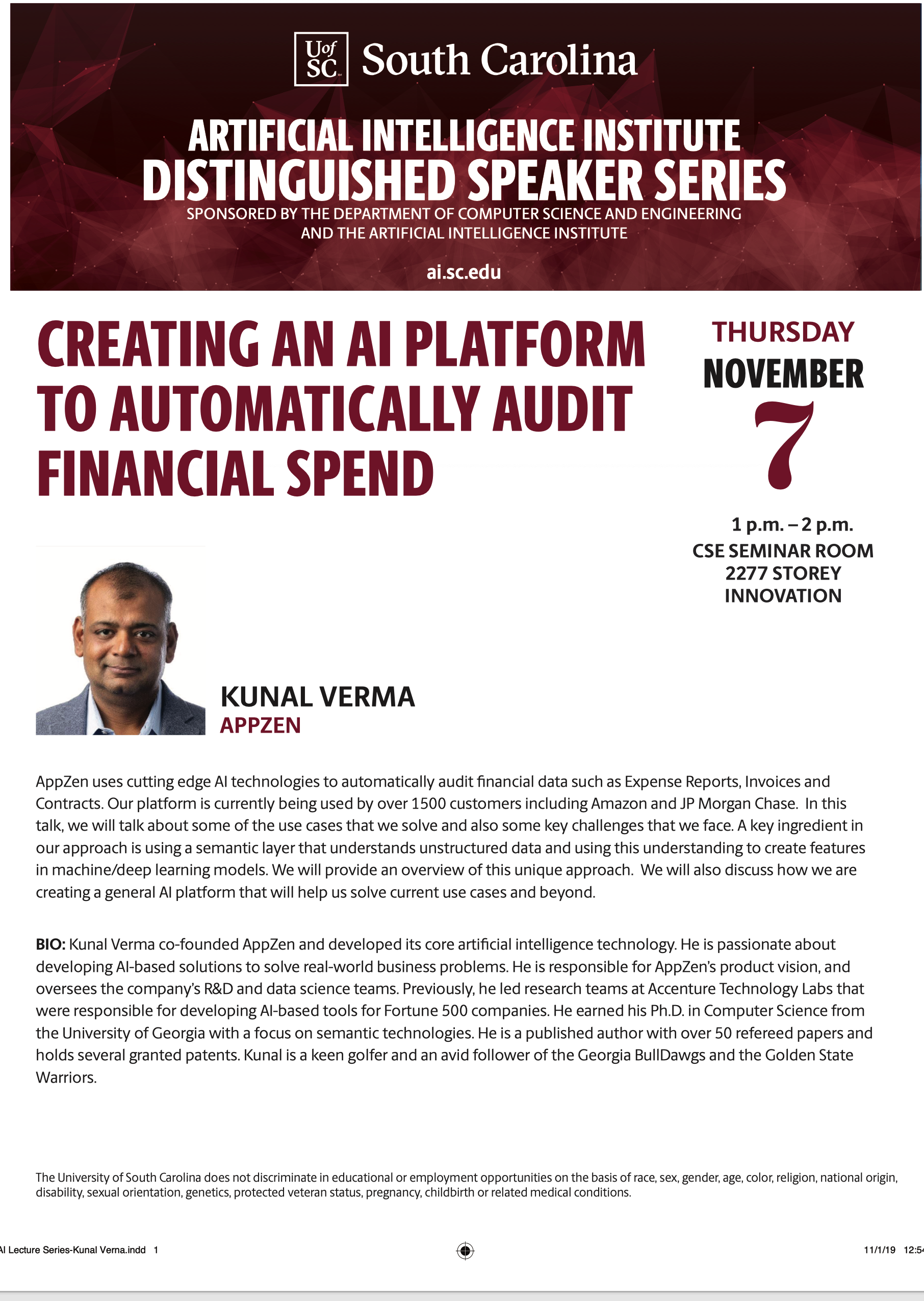Getting Started in Open Source: ACM Student Group
- 15 views
Thursday, February 6, 2020 - 07:00 pm
Swearingen Engineering Center, room 2A17
If you aren't familiar, ACM is one of Computer Science's oldest and most established professional organization. Our university ACM chapter primarily hosts weekly student talks by undergrads and graduate students in CSE. This semester these will usually be held on Thursday nights at 7 in the CSE Student Lounge (SWGN 2a17) We also do a lot else, so consider joining our mailing list (email kennethj@email.sc.edu) or checking out our website: http://acm.cse.sc.edu
While most students that come to our meetings are in CSE, we welcome students from across the university to attend. There is no expectation of your time, so come as often or as little as you wish. Furthermore, while some talks will certainly be more advanced than others, we believe there is something of interest in every presentation for all levels of technical experience. Only an interest in computing is required to receive your free pizza!
This week we will be returning to our normal cadence with a presentation by undergraduate Josh Nelson. There will be FREE PIZZA from 7-7:15 before Josh's talk begins.
The details:
---------------------------------------------------
"Getting Started in Open Source"
Thursday, February 6th, 2020
7:00-8:15pm
Swearingen Engineering Center, room 2A17
FREE PIZZA
All majors and backgrounds, both technical or otherwise, welcome!
-------------------------------------------------------
Josh will cover the key components of getting started - contributing- to open source projects. This includes:
- finding a project
- deciding what to work on
- communicating with the maintainers
- making your first pull request (PR)
Josh will use his real PRs and projects as examples of open source best practices (and not-so-best practices). There will be a discussion of how to use common open-source tools like git, markdown, continuous integration (CI) providers, and unit tests as they pertain to contributing to a project.
If time permits, we can help attendees find projects they'd be interested in contributing to. While this talk caters to beginners, there is surely something of interest for programmers of all skill levels.
Come with questions (and bring a friend)! Information about the talk can be found on our website at https://acm.cse.sc.edu/events/2020-02-06.html.
In other news...
Be on the lookout for more information about our Spring 2020 ACM Code-a-Thon! Please note that information is still being finalized at this time. I'll send a standalone email out as an announcement with all the details as soon as we divine them ourselves. Details will be posted to the website as well: https://acm.cse.sc.edu/events/2020-code-a-thon.html.
As always, please feel free to reach out to me with any questions! (Just respond to this email to get in touch.)
Best,
Kenneth Johnson
ACM Communications Chair

